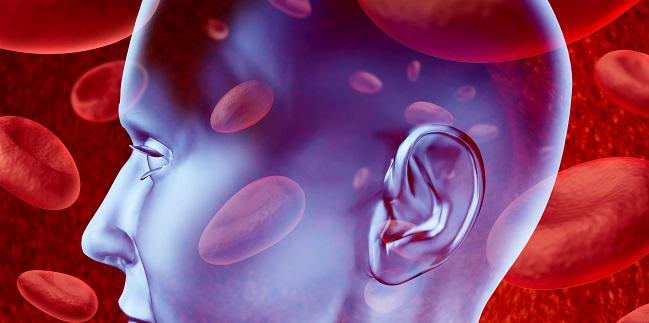NOAC-Related Intracranial Hemorrhages May Not Be as Bad as Those Stemming From Warfarin
Patients taking one of the newer agents present with smaller, less severe hemorrhages, with potential gains in function and survival.

HOUSTON, TX—There’s no such thing as a good intracranial hemorrhage (ICH), but a new analysis hints that patients who have one might be better off if they’re taking a non-vitamin K antagonist oral anticoagulant (NOAC) rather than warfarin at the time.
A prospective cohort study showed that those with NOAC-related hemorrhages presented with a smaller hematoma volume, less severe stroke symptoms, and a lower rate of severe ICH than did patients who were taking a vitamin K antagonist (VKA), Georgios Tsivgoulis, MD, PhD (University of Athens, Greece), reported at the International Stroke Conference held here last week.
Moreover, a meta-analysis incorporating those findings suggested that NOAC-treated patients were less likely to die in the hospital.
Tsivgoulis said that the results highlight NOAC therapy as an attractive option for patients with nonvalvular A-fib and a high ICH risk, adding, however, that confirmation of the results is needed in larger studies.
Commenting for TCTMD, Steven Greenberg, MD, PhD (Massachusetts General Hospital, Boston), said, “We know that warfarin-related hemorrhages are probably the most deadly form of stroke there is, with mortality approaching 50%, and it’s pretty clear that the NOACs . . . [carry] a lower risk of having an intracranial hemorrhage.” The question of whether there is a difference in terms of the severity of those hemorrhages based on the type of anticoagulation remains open, he said.
This study is limited because it is not randomized and patients receiving a NOAC could be systematically different from those treated with warfarin, Greenberg said. Nevertheless, “it at least suggests that the [NOAC-related] hemorrhages are no more severe and may be actually less severe than warfarin-related hemorrhages,” he continued. “So from my standpoint, it supports the idea that in people who need to be anticoagulated with very strong indications but where there’s concern of intracranial hemorrhage, the NOACs may offer now several advantages. One is lower risk of having a hemorrhage in the first place, and secondly, there’s at least a suggestion that the outcome if you do have one may not be as bad.”
Possible Differences in Function, Survival
For the prospective study, Tsivgoulis and colleagues enrolled consecutive patients treated with oral anticoagulation who presented with nontraumatic ICH to 13 tertiary stroke centers in North America, Europe, and Asia between June 2015 and July 2016. They excluded patients with cerebral ischemia and hemorrhagic transformation.
The analysis included 114 patients taking a VKA and 47 patients taking one of the NOACs—51% rivaroxaban (Xarelto; Janssen Pharmaceuticals), 32% apixaban (Eliquis; Bristol-Myers Squibb), and 17% dabigatran (Pradaxa; Boehringer Ingelheim).
At baseline, NOAC-treated patients had a lower National Institutes of Health Stroke Scale (NIHSS) score (median 8 vs 15), smaller baseline ICH volume (median 12.8 vs 24.3 cm3), and lower rate of severe ICH (17.0% vs 36.8%). All of those differences were maintained after multivariable adjustment.
After adjustment, there were no differences between the NOAC and VKA groups in terms of disability (defined as a modified Rankin Scale [mRS] score > 2) or in the distribution of mRS scores at 3 months. But in an additional analysis that excluded admission NIHSS and baseline ICH volume—because of their strong associations with NOAC therapy—patients taking one of the newer agents were less likely to be disabled (OR 0.45; 95% CI 0.20-0.99) and more likely to have functional improvement (OR 2.44; 95% CI 1.25-4.85) at 3 months.
When pooling results with two other studies, the investigators showed that NOAC-related hemorrhages had smaller volumes at admission, carried a lower risk of in-hospital mortality, and tended to result in a lower rate of hematoma expansion. That last finding did not reach statistical significance, but Tsivgoulis noted that only one NOAC-treated patient received idarucizumab (Praxbind; Boehringer Ingelheim), the reversal agent for dabigatran, and that hematoma expansion might become less of a problem with the newer anticoagulants as specific antidotes become more widely available.
Support for NOACs
Although the pivotal trials of NOACs versus warfarin have shown that the newer drugs are safe and at least as effective as warfarin for preventing stroke, Greenberg pointed out that early on in the rollout, clinicians were hesitant to use the agents in patients at risk for bleeding because of the lack of specific reversal agents.
Greenberg said he would counter those concerns by citing the high risk of mortality that remained in patients with warfarin-related ICH despite the presence of reversal strategies like fresh frozen plasma, prothrombin complex concentrate, and vitamin K, as well as the halving of the risk of having an ICH with NOACs. Those points were enough to offset any concern about lacking an antidote, and this analysis represents “a second argument in that direction,” he added.
Clinicians always have to be aware of the risk of ICH, regardless of the type of anticoagulation being used, Greenberg stressed. “But in a tough situation where there’s a very strong indication for anticoagulation in someone who also has risk for intracranial hemorrhage, [this study] offers support that the risk may not be so high as to offset the benefit of anticoagulation for the patient.”
Todd Neale is the Associate News Editor for TCTMD and a Senior Medical Journalist. He got his start in journalism at …
Read Full BioSources
Tsivgoulis G. Neuroimaging profile and outcomes in vitamin K antagonist and direct oral anticoagulant related nontraumatic intracerebral hemorrhage. Presented at: ISC 2017. February 24, 2017. Houston, TX.
Disclosures
- Tsivgoulis reports receiving a research grant from the European Regional Development Fund, Project FNUSA-ICRC.
- Greenberg reports no relevant conflicts of interest.


Comments